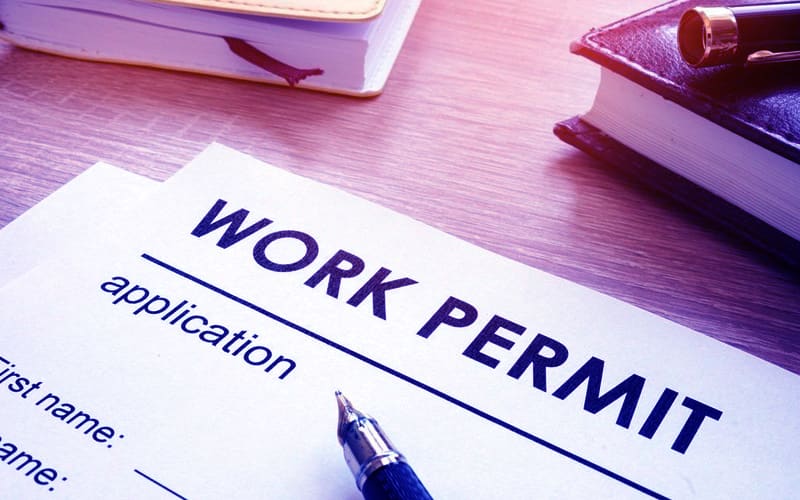
Applying for a Canadian work permit usually takes place outside the border though exceptions can be made at the border in some cases. As a result of the COVID-19 pandemic, visitors are allowed to apply online for a work permit while in Canada.
This article will focus on how to apply for a Canadian work permit. However, we will also focus on other areas of equal importance, such as the general eligibility requirements to be able to apply for a work permit, the various steps involved in applying for the Canada work permit, et cetera.
The Eligibility Requirements to Apply for the Canada Work Permit
A Canadian work permit can best be described as the permission a potential foreign worker seeks if he intends to work in Canada.
To be able to work in Canada as a citizen of a foreign country, you need to obtain a work permit. In some cases, you might be permitted to work without a work permit in Canada.
These are some of the eligibility requirements to apply for a Canadian work permit;
- You must be able to prove to Canadian immigration officials that you have enough money to take care of yourself and family members if you’re coming with them to Canada.
- You must also prove that you intend to leave Canada at the work permit’s expiration.
- You should also prove law-abiding by producing a police clearance certificate.
- You must be in good health with no traces of infectious diseases. You will also be required to pass a medical exam.
- You should provide the immigration officials with any document they request.
- You must not work for an employer who offers escort services, erotic massages, et cetera.
How to Apply for Canada Work Permit
To apply for a Canada work permit, you must first apply for a work visa if you’re applying outside Canada. Applying for a Canadian work visa requires four stages:
- The labor market impact assessment (LMIA)
- The temporary job offer
- The application for a work permit
- The issuance of the work permit
Step 1: Labor Market Impact Assessments (LMIA)
Before trying to apply for a temporary Canadian Work Visa, in most cases, you need to qualify for a Labour Market Impact Assessment (LMIA)
Who does not need to apply for an LMIA?
The following are categories where temporary work permits are LMIA exempt:
- Skilled Workers covered under the NAFTA agreement;
- Intra-Company Transferees;
- International Experience Canada participants (also known as Working Holiday Permit holders);
- Post-Graduate temporary work permit holders;
- Bridging Open Work Permit holders; and
- Participants in private academic exchanges such as postdoctoral fellows, visiting professors, et cetera.
Step 2: Employer Extends Temporary Job Offer
The employer must send a copy of the positive LMIA and a detailed ‘job offer letter’ to the skilled foreign worker.
CIC requires Canadian companies to prepare a formal employment contract or what our industry refers to as the ‘Job Offer Letter,’ which must include:
- The job title for the position
- Job description
- Requirements for the temporary position
- Details about start and end dates
- Specifics about the salary
- The name and address of the employer
Canada Service Agency will ensure that the job offer is legit and accurate. Once the Canadian immigration department has confirmed the job offer with an LMIA, the CIC will grant employment authorization for the company’s future employees to work in Canada.
Once the LMIA is granted, the Canadian employer can extend a temporary job offer to the foreign skilled worker.
Step 3: Foreign Skilled Worker Applies For a Work Permit
Once you have your LMIA and ‘Job Offer Letter’ squared away, you can apply for a Canadian Temporary Work Permit. Suppose the employer that is hiring you is in the province of Quebec.
In that case, you may also need to obtain a Certificat d’acceptation du Québec (CAQ) to work temporarily in Quebec.
In some cases, when applying for a temporary foreign worker permit, you will be required to attend an interview with a visa officer.
Suppose the visa officer is satisfied that the foreign worker’s employment will not adversely affect employment in Canada for Canadians and that the foreign worker qualifies for the position. In that case, a Canada Work Permit will be issued.
Note: In some cases, applicants from certain countries will be required to undergo medical examinations.
Step 4. Get Issued a Canadian Temporary Work Permit
A Canada Border Services Agency (CBSA) officer will issue the Canadian Temporary Work Permit at the point of entry when the skilled foreign worker arrives in Canada.
Depending on the foreign worker’s country of citizenship, a Temporary Resident Visa (TRV) may also need to be obtained to enter Canada. In addition, there are a few more minor steps and processes to obtaining a work visa.
Note: If a specific position of your job is at the NOC 0 (managerial, executive) or NOC A (professional) level, you may be eligible for two-week application processing.
The Canadian Experience Class
According to the Canadian government immigration website, the Canadian Experience Class (CEC) is a permanent residency category for people with skilled work experience in Canada.
However, it also explained that it was primarily designed for temporary foreign workers or expatriates and foreign graduates with qualifying work experience in Canada.
Have at least 12 months of full-time (or an equivalent in part-time) skilled work experience in Canada within the last three years.
This experience must have been obtained while on a valid work permit and needs to be in one or more occupations classified as skill type 0, A, or B under the National Occupational Classification (NOC).
Meet the required language levels needed for the job for each language ability (speaking, reading, listening, and writing). These levels are outlined in the table below and must be proven by taking an approved language test.